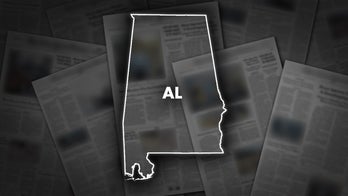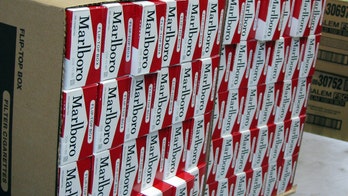The White House, reacting to the latest jobless report showing the unemployment rate fell unexpectedly to 9.4 percent in July, predicted that despite the good news the rate would still hit 10 percent before year's end.
But in effect it already has.
The actual percentage of Americans who remain unemployed -- including those who have stopped looking for work -- is considerably higher than 9.4 percent and surpassed 10 percent months ago. By one measure, the unemployment rate is really 10.7 percent.
When you count those forced to settle for part-time work, the number is higher still. The 9.4 percent figure represents a very specific measurement of unemployed people that doesn't factor in everybody.
The Labor Department report Friday was good news nevertheless. It showed the jobless rate fell one tenth of a point, the first decline in 15 months.
President Obama said Friday his administration has "rescued our economy from collapse." He said much more needs to be done and that he won't rest until "every American that is looking for a job can find one."
White House Press Secretary Robert Gibbs said Friday that while there's still plenty of work to do the report is "more evidence that we have pulled back from the edge" of a depression.
Employers throttled back on layoffs in July, cutting just 247,000 jobs, the fewest in a year. It was a better-than-expected showing that offered a strong signal that the recession is finally ending.
But if laid-off workers who have given up looking for new jobs or have settled for part-time work are included the unemployment rate would have been 16.3 percent in July. That's down from 16.5 percent in June, which was the highest on records dating to 1994 -- but still higher than a few months ago.
Nailing down the actual percentage of unemployed Americans is exceedingly tricky. The Labor Department uses a survey method, like a poll, to gauge unemployment -- not a Census-style head count. The survey tries to determine the number of unemployed as a percentage of the labor force, but the labor force is only defined as those who are looking for work.
So many who are technically out of work are not counted in the unemployment rate. One of the reasons the rate went down in July was because hundreds of thousands of people left the labor force. All told, there were 14.5 million out of work in July.
Those who are not working and not looking for work, but indicate they are available for a job and have looked in the recent past, are considered "marginally attached workers." Those people are not counted as part of the labor force in the Labor Department's numbers. Also, "discouraged workers," or those who have given up looking for work because of job-market related reasons, are not counted. Naturally, the homeless population would also not be counted by and large because many homeless do not have phones and would not be contacted as part of the survey.
If part-time workers are excluded, but discouraged workers are included, July's unemployment rate was 9.8 percent.
If that number includes all marginally attached workers, the percentage for July was 10.7 percent. That number topped 10 percent back in April.
But Cato Institute fellow Alan Reynolds noted that all of those alternate unemployment rate figures are down from the month before and reflect a positive trend.
"You don't have to look far in this report to see fairly optimistic signs," he said. "There's a lot of good news in this report."
Even if the unemployment rate hits 10 percent as Obama predicts, Reynolds said, the increase could still reflect positive growth -- since it could mean more people are entering the workforce and looking for jobs. Such a development would increase the size of the labor force as defined by the Labor Department, temporarily causing the unemployment rate to rise.
The new snapshot released by the Labor Department on Friday also offered other encouraging news: workers' hours nudged up after sinking to a record low in June, and paychecks grew after having fallen or flat lined in some cases.
To be sure, the report still indicates that the jobs market is on shaky ground. But the new figures were better than many analysts were expecting and offered welcomed improvements to a part of the economy that has been clobbered by the recession.
Analysts were forecasting job losses to slow to around 320,000 and the unemployment rate to tick up to 9.6 percent.
The dip in the unemployment rate -- from June's 9.5 percent -- was the first since April 2008.
Since the recession began in December 2007, the economy has lost a net total of 6.7 million jobs.
Also heartening: job losses in May and June turned out to be less than previously reported. Employers sliced 303,000 positions in May, versus 322,000 previously logged. And, they cut 443,000 in June, compared with an earlier estimate of 467,000.
The job cuts made in July were the fewest since August 2008.
The slowdown in layoffs in part reflected fewer jobs cuts in manufacturing, construction, professional and business services and financial activities -- areas that have been hard hit by the collapse of the housing market and the financial crisis. Retailers, however, cut more jobs in July.
Those losses were blunted by job gains in government, education and health services, and in leisure and hospitality.
Still, the worst of the job cuts have passed.
The deepest job cuts of the recession came in January, when 741,000 job disappeared, the most in any month since 1949.
Slower job losses are occurring because companies aren't cutting investment and spending as drastically as they had been during the depths of the recession which came in the final quarter of last year and carried over into the first quarter of this year.
With companies feeling a bit better about the economy's prospects and their own, they boosted workers' hours in July. The average work week rose to 33.1 hours, after having fallen to 33 hours in June, the lowest on records dating to 1964.
And, employers bumped up wages. Average hourly earnings rose to $18.56 in July, up from $18.53 in June. Hourly earnings were stagnant in June. Average weekly earnings, which fell in June, rose to $614.34.
Other recent barometers have shown some improvements in manufacturing, housing and construction activity.
The government reported last week that the economy shrank at a pace of just 1 percent from April-to-June, the strongest signal yet that the recession may be ending.
Many analysts predict the economy could start growing again in the current July-to-September quarter. And, the Fed recently observed that the economy is finally showing signs of stabilizing in some regions of the country -- especially in parts of the Northeast and Midwest -- bolstering hopes of a broader-based recovery this year.
The Associated Press contributed to this report.




